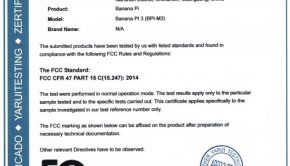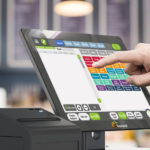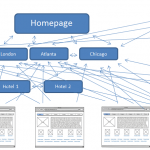Simplify Your Business Processes With RPA
Owning a business is a worthy goal that many people pursue with enthusiasm. That said, while business ownership can be a highly rewarding and fulfilling goal, successfully running a company is not necessarily an easy thing. As a matter of fact, close to 60 percent of all businesses will fail within their first five or six years of operation.
Thankfully, all is far from doom and gloom because these statistics still acknowledge that over 40 percent of all business owners do succeed in their efforts. These surviving business owners rarely succeed because they are unorganized or unprepared. On the contrary, most successful companies can perform at high levels because of their use of business systems and processes.

What Are Business Systems and Processes?
Business systems and processes are vital parts of any successful business model. Whether company proprietors may realize it or not, their high-performing businesses use some types of systems and processes. But, just what are business processes and systems?
While processes may at first sound complicated, they can be easy to understand. For our purposes, processes can be defined as sequences of tasks that allow people to achieve specific outcomes.
For example, a custodial worker who wishes to clean a break room may have a process that involves collecting necessary equipment, preparing such equipment for use, moving furnishings around, and tidying up the room. Each step in this process allows the custodial worker to achieve the outcome of cleaning the break room.
Systems can be thought of as collections of interrelated processes that allow organizations to achieve their aims. For example, the custodial work process may be a part of a more extensive system called facility maintenance. The facility maintenance system may also have other processes such as inspections, damage mitigation, snow removal, etc.
A key point to remember is that business processes tend to take inputs and add value to them, while business systems are comprised of a large or small number of processes.
RPA Explained
There’s no doubt that the future of business process automation and systems will help firms to perform at higher levels. Even though this is true, it doesn’t mean that executing the systems and the processes that make them up is an easy task.
Actually, many highly skilled knowledge workers spend significant amounts of time tending to repetitive, uninteresting, and low-skill processes. Not only does this cut into production time, but it can also prevent these workers from using their skills in more productive ways.
This is where Robotic Process Automation (RPA) comes into the picture. Process automation provides a smooth, scalable, and effective way for business proprietors to streamline time-intensive processes and to increase worker and system productivity. It employs specialized software bots that are capable of performing many basic functions that used to be only the province of humans.
For example, automation software can perform tasks such as searching the web for information, scraping websites, entering data, completing fields, integrating communications/data across platforms and businesses, and much more.
What Does RPA Software do to Simplify My Business Processes?
Automation software comes in many varieties and can do much to simplify and improve business systems and processes. Some examples of what high-level automation software can do includes:
- Increases accuracy to one hundred percent and does away with human error
- Increases process speed by up to three times
- Capable of round-the-clock operation
- Reduces costs over time
- Easy to scale up or down to satisfy business demands
- Enables high-skilled workers to be more productive
Where Can I Acquire Robotic Process Automation Software?
Automation software can do wonders for businesses by improving relevant systems and processes. Another good thing about automation software is its ability to work in conjunction with existing computer systems. As such, automation tools are now widely available to not only small businesses but also for enterprise-size operations.
There are many varieties of robotic automation software out there and just as many producers. Within this group, an exclusive provider stands out for software-bot robustness, ease of use, and efforts to educate users. This unique provider is known as UIPath.
UIPath is a leader in the robotic software automation field. Their software is freemium-wear that 80% of the top 10 Fortune 500 companies make use of. The community edition of the UI Path software is easy to download, scalable, and provides users with in-depth educational resources that help them to quickly and effectively apply automation to their specific business operations.
In the world of automation, there is no doubt that the future is happening now. As such, individuals and businesses who wish to keep up with the times, boost their productivity, and stay competitive in today’s tough business environments would do well to harness the power of automation software.
















